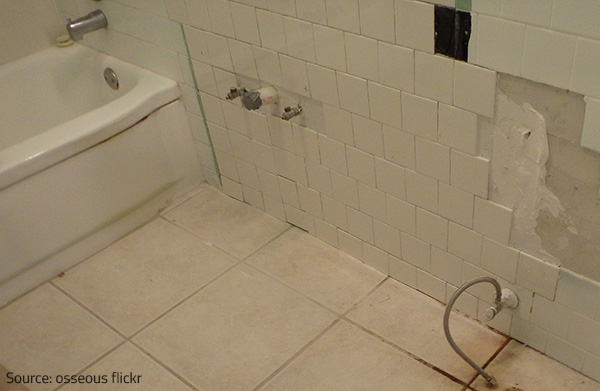They are making several good observations related to Preventing Water Damage in the Bathroom as a whole in this content following next.

The restroom is exceptionally susceptible for wet build-up and also prospective water damages due to the constant use of water in it. This post offers easy examination techniques to assist detecting water damages hazards.
The regular use water in the bathroom makes it very at risk for damp accumulation and also potential water damage. By examining it consistently, you can decrease water related problems.
The following set of evaluations is simple to perform as well as need to be done as soon as in every three months in order to keep your washroom healthy and to stop possible water problems brought on by the bathtub, the shower, pipeline joints as well as plumbing, sinks, closets, and also the bathroom
Do not neglect carrying out these inspections as well as be comprehensive while doing them. Remember that these straightforward evaluations can conserve you a great deal of money by supplying very early indications for water damage
Sinks as well as Cabinets
Sinks and also cabinets are subjected to dampness and also humidity everyday as well as are often neglected. Check consistently under the sink and on the counter top over it. Fix any type of drip in the catch as it might recommend drain problems. Browse the sink, slow-moving draining pipelines might indicate a blocked drain. Replace sink seals if they are split or loosened.
Bath tub and also Shower
The shower and bathtub need special interest as well as upkeep. Examine the floor tiles and also change if cracked. Make sure that there is no missing grout between the tiles. Examine and replace broken caulking at joints where the walls satisfy the floor or the tub. Blocked drains as well as pipes issues will avoid the tub from drying and may indicate serious problems beneath the bathtub. Consult with a professional quickly to stop structural damage. Pay attention to stainings or soft locations around the tub walls as they may indicate an internal leakage.
Plumbing
Signs for water damages are tough to find considering that a lot of pipelines are mounted inside the walls.
Pay special focus to floor covering and wall surfaces wetness and discolorations as they might indicate an invisible plumbing trouble. Inspect moisture degrees in adjoining rooms too.
The Bathroom
The toilet is an at risk water junction. Examine the water lines and look for leaks around the commode seat, in the pipe, and under the water container. If you discover any indications of moisture on the flooring around the toilet, look for leaks in the toilet edge and container seals.
Understand that hanging commode dish deodorants boosts the chances for obstructions.
Water Damage Signs In The Bathroom To Avoid Cleanup
Musty smell
This is one of the easiest signs to catch because musty smells are so odorous. The damp, earthy, moldy smell should be a big red flag. The smell will develop when moisture gets trapped in surfaces, and begins to facilitate mold growth. Leaking pipes under cabinets, inside walls, and behind shower fixtures will cause moisture to stay trapped and not dry, which will lead to mold growth and spread. As soon as you notice any musty smells in your bathroom, have it checked for hidden water damage and cleanup signs.
Visible mold
If the smell isn’t there to give it away, sometimes you will actually see mold growth. Finding mold in your bathroom is a serious problem, because mold is very harmful to your health. By the time mold growth is visible, it also means that water damage has already occurred and been present for some time. The only way the mold problem can be resolved is to find the source of the moisture and get it stopped. To safely and adequately remove mold, you need to have professionals handle the remediation. Do not waste any time in getting mold problems addressed, fixed, and sanitized so that you can protect you and your family from the many respiratory symptoms caused by mold exposure.
Damaged floors
Bathroom floors should be able to withstand some exposure to water while still remaining in good condition. However, when excess exposure or water leaks occur, they will begin to damage even the most water-resistant flooring. If you notice any cracking, bubbling, staining, or warping on your bathroom floors, there is probably a water leak somewhere causing the distortion. If you notice areas of the floor have become softer, or even have a spongy feeling, there is probably damage to the subfloor. Subflooring is typically made up of plywood. When plywood is exposed to water or moisture, it will absorb it. Once it has become saturated, the weight of the excess water will cause the wood to swell and soften. Check the floors in your bathroom frequently to catch any of these sings before they lead to damaged subflooring.
Changes on walls
When water leaks behind walls, it will cause changes in the drywall. Peeling plaster, blistering paint, and soggy wallpaper are all good indicators that excess water is building up behind the wall. Water leaking behind drywall will cause it to swell and be soft to the tough. If you start to notice gaps along the trim of your walls, or where tile meets the wall, it could also be a strong indicator that there is a leak behind the wall. Any changes, distortion, or damage on the walls should be evaluated as soon as you notice it to prevent further water damage and cleanup.

Hopefully you liked our excerpt about How to Fix a Water Damage Bathroom. Thanks so much for taking time to browse our blog. Remember to take the opportunity to share this post if you appreciated it. We thank you for reading our article about How to Prevent Bathroom Water Damage.
Browse Website